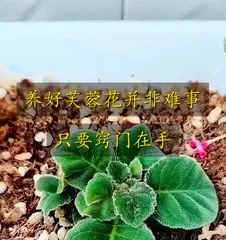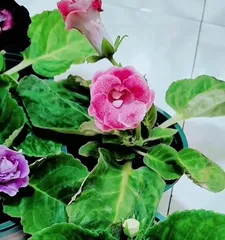Potted hibiscus is a beautiful indoor plant, and its vibrant flowers and green leaves bring a sense of tranquility and joy. Keeping a potted hibiscus at home not only adds greenery to the indoor space but also enhances the quality of the living environment. However, to keep a potted hibiscus healthy and flourishing, proper care methods and techniques are required. Next, we will provide a detailed introduction on how to care for potted hibiscus.

1. Choose the right pot and soil: A potted hibiscus is suitable for a ceramic pot with a diameter of about 20-30 cm to ensure the roots have enough room to grow. The soil should be loose, fertile, and have good water retention, such as a potting mix.
2. Suitable temperature and light: Potted hibiscus thrives in an indoor environment with a temperature maintained between 15-25°C, avoiding direct scorching sunlight and cold. In terms of light conditions, hibiscus loves plenty of sunlight but should not be exposed to intense sunlight for long periods.

3. Ensure adequate watering: Hibiscus prefers moist conditions and is not drought-tolerant, so the potting soil should be kept moderately moist, but avoid overwatering to prevent root diseases. Generally, water 2-3 times a week, and be careful to avoid waterlogging.
4. Pay attention to fertilization: Potted hibiscus needs sufficient nutrients. You can use a compound fertilizer containing elements like nitrogen, phosphorus, and potassium for top-dressing. Generally, apply fertilizer 1-2 times a month, and do not overdo it.
5. Regular pruning and pinching: To maintain the beautiful shape of the hibiscus, you can regularly prune branches, leaves, and flower buds. At the same time, you can also perform pinching to promote more branching and growth of the flowers.

6. Prevent pests: Potted hibiscus is susceptible to pests such as aphids and whiteflies. You can use appropriate pesticides for control, but pay attention to the usage method and dosage to avoid harming the flowers and humans.
7. Prevent diseases: Hibiscus is prone to diseases such as root rot and gray mold. Keep the potting soil well-ventilated, avoid overwatering and lack of fertilizer to improve the plant's resistance.
8. Manage the pot: The pot for potted hibiscus should be cleaned and disinfected regularly to keep it clean and pollution-free. At the same time, the potting soil should be replaced in a timely manner to provide fresh nutrients.
9. Care during the flowering period: During the flowering period of hibiscus, pay attention to adjusting light and temperature, avoid large temperature differences and strong light exposure to extend the flowering period.
10. Flower pollination and seed setting: Potted hibiscus can be hand-pollinated to promote seed setting. Select flowers in the early stage of opening, gently brush the pollen with a fine brush, and then lightly apply the pollen to other flower buds, which helps increase the seed setting rate.
11. Treatment after flowers wither: After the hibiscus flowers wither, they can be pruned off to promote the growth of new flower buds. At the same time, an appropriate amount of phosphate fertilizer can be applied to help the development and opening of new flower buds.
12. Dormancy period of hibiscus: Potted hibiscus enters a dormant period in winter. At this time, reduce the frequency of watering and fertilizing, and maintain a lower temperature. Wait until spring arrives, then gradually resume normal care.
13. Propagation of potted hibiscus: Potted hibiscus can be propagated by seeds, cuttings, or division. Choose a suitable propagation method and follow the correct steps to better ensure the success rate of propagation.
14. Beautification effect of potted hibiscus: Potted hibiscus can not only add greenery to the indoors but also provide beautiful flowers, enhancing the aesthetic appeal of the living environment. With proper arrangement and coordination, a warm and pleasant indoor garden can be created.
15. Ornamental value of potted hibiscus: Potted hibiscus has a rich variety of cultivars and flower colors. It is not only suitable for viewing but can also be used for making bonsai. Its elegant posture and gorgeous flowers attract the love of many flower enthusiasts.
Potted hibiscus is a beautiful plant suitable for indoor cultivation. Through proper care methods and techniques, potted hibiscus can be kept healthy and flourishing, providing beautiful flowers and greenery. We hope that the above care guide can help everyone successfully care for their own potted hibiscus and create a beautiful indoor garden.